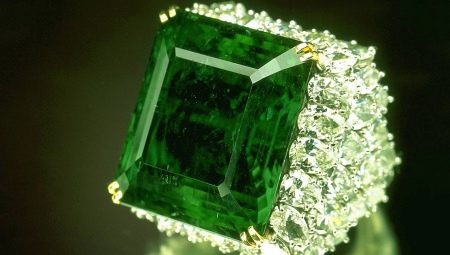Gems have been riveted and will always rive the eyes of people. But only as fully as possible imagining everything that is connected with them, you can appreciate the advantages of minerals.
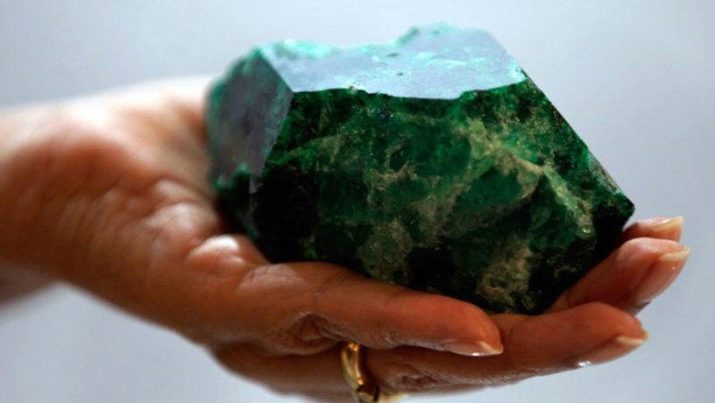
What it is?
Most people's perception of emerald is very superficial. Usually they only remember that it looks like a green crystal. But the importance of emeralds in culture and mythology is very great. A number of peoples assigned this mineral a very important place. Geologists have long established that the green gem is a subspecies of beryl.
Along with the main color, he may have blue notes. The high cost, allowing to attribute emeralds to the number of precious stones, is due to its attractive color. The green tone is due to the fact that a small amount of chromium is present in the composition of the stone. Certain varieties of the mineral may contain vanadium instead of chromium. The characteristics of the raw samples are determined primarily by the place from which they were extracted.
Separating a real gem from many similar rocks and minerals is easy. It is necessary to take into account the purity and transparency of substances.
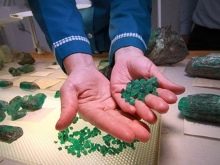
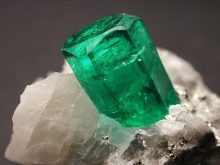
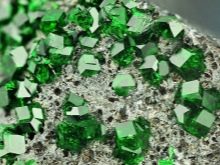
They are considered one of the most durable natural substances on Earth. Some geologists believe that the longer the rock is underground, the harder it becomes. Of key importance for determining the value of a sample is its transparency.
Emerald, diamond and ruby - this "triumvirate" of mineral jewelry, undoubtedly leading in price. The cleanest stones after cutting are naturally the highest priced. An additional plus is the absence of visually noticeable deformations. Emerald worshipers most value about 6 carats. They are ready to pay almost unlimited money for their dream.
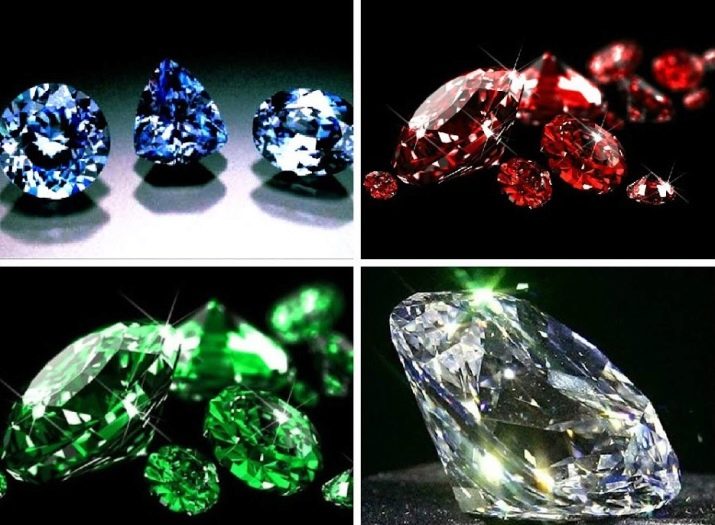
Deposits and Production
It should be noted that in different emerald regions of the planet, a mineral can have a different density. Those stones that are mined in Russia and Colombia have a specific gravity of 2.712. The density of South African products is 2.77. In Brazil, this parameter is noticeably less - only 2.67. It has been established that the densest stones contain cesium and rubidium.
It will never be possible to find out exactly when the emeralds were purposely extracted from the deposits purposefully. But it is reliably known that in the IV century BC, the Babylonians launched a trade in this mineral. And the first data on serious development of the field appeared 37 centuries ago. In ancient Egypt, emerald mining began near the shores of the Red Sea. But those deposits that were exploited in antiquity and even in the Middle Ages are no longer of particular interest to industry.
At the beginning of XXI, Colombia is the undisputed leader in industrial emerald mining. About 1 out of every 5 green stones is exported from Zambia. Despite the lesser fame, Zambian products are much better. In our country, the main region of the emerald industry is the Urals. About 300 years ago, it was considered part of Siberia, and that is why all the ancient references to Siberian emeralds actually belong to the Urals.
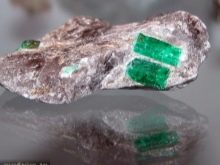
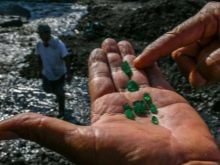

The properties
Like any other decorative minerals, emerald in a number of cultures has traditionally been endowed with magical properties. This crystal was supposed to:
suppresses headaches;
eliminates nightmares;
stabilizes sleep;
helps fight infectious diseases, psoriasis;
eliminates night blindness, gastrointestinal disturbances.



Both ancient and modern mystics believe that the emerald is great for meditation. There are a number of other prejudices, in particular, regarding the influence of emerald on the character of the owner. As if it helps to make people more active, to cope with the desire to steal, deceive and lead a dissolute lifestyle. It is believed that a precious crystal, while maintaining the same vices, can cause damage to the owner, and if this does not change the matter, then it breaks by itself. The stone also purifies the mythical “energy” of the house.
There are other mythological properties of emerald. For example, they say that this stone resists various diseases and the “evil eye”. It is believed that this is important during pregnancy and lactation. Mystics claim that green stone will help to cope with the negative properties of character. As if he is able to cope with conflicts and quarrels between people.
Relevant myths are rooted in ancient Egypt. As for the later religions and mystical teachings, they attribute to the emerald the properties of connecting with the "other world". Large crystals are actively used in occult rites, they are associated with immortality and with reincarnation. But mystics say that a stone can "accumulate negative energy." There are other sayings - for example, that overnight an emerald can give anti-aging properties to water in a glass.
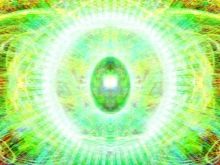


Kinds
Colombian green stones are painted in a grassy tone. Only minor deformations are characteristic of them. In addition to the main variety, the so-called “trapechi” is mined in Colombia. This type of stone has a wheel-like pattern. Six "spokes", like rays, extend from the middle of the mineral.
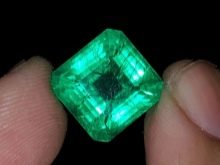
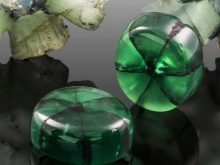
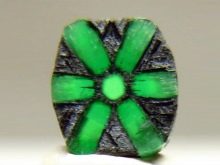
The Zambian species stands out among all the others with its superb beauty. The crystals delivered from this African country stand out for their perfect purity and transparency. A dense green color is typical for them. Some Zambian stones come in yellow or blue. The Ural emerald is always large and painted in a dark green tone. Light crystals are mined in South Africa, however, they are rather clouded; Only cabochon is suitable for processing.
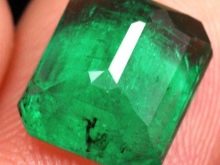
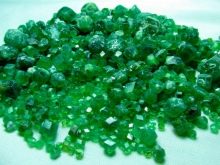
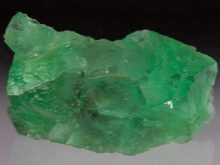
Quite significant deposits are found in:
Austria
Egypt
Norway.
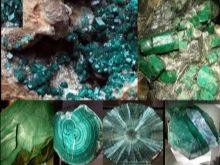
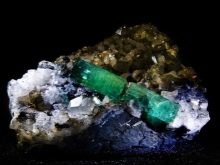
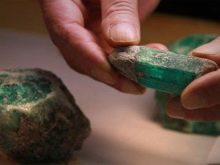
More or less large-scale production was organized in France and in Italy, in Spain and Germany. A certain amount of emerald raw material is supplied from Kazakhstan or is of Swiss origin. The Brazilian emerald is transparent and of high quality. It is characterized by yellowish notes.
As for the modern Yakut (Siberian) "emeralds", these are not emeralds at all, but chrome diopsides.
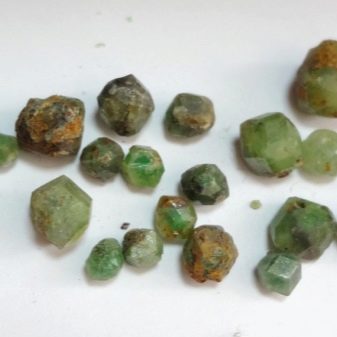
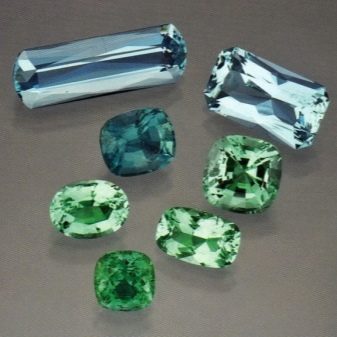
Ural emeralds are sometimes called Malyshev emeralds (according to the main deposit). Their deposits were discovered quite by accident, at the beginning of the XIX century. There is a mention that once during the uprooting of a tree strange green stones were noticed. They did not even immediately attach importance to this fact. When the finds were at the disposal of specialists, they were struck not only by the case itself, but also by the quality of the mineral.

How to distinguish natural stone from fake?
Occasionally, the fabrication of green stones is done by producing an artificial product. Russian industry has mastered the production of emerald brushes. They are obtained by deposition on beryl. In a number of foreign countries such a product is also made; he received the name emeraldonite.
Chemically and physically synthesized mineral is almost inferior to natural samples. The difference is only in price. Strictly speaking, the goods received at the factory cannot be considered fake. However, its origin should be clearly indicated in the descriptions or in the attached documentation. Skillful imitation can be established only with the help of specialists. Both types of emeralds may have defects. The only difference is which of these defects. Natural stone has small cracks and streaks.
In a factory-made sample, bubbles or inclusions in the form of tubes can be found. Natural raw materials are slightly turbid in color.
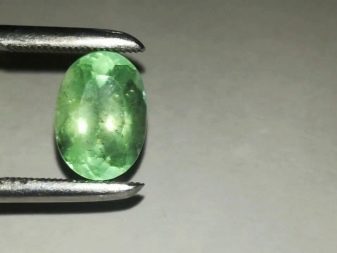
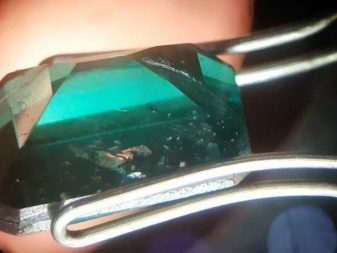
Of course, evenly colored minerals are sometimes found in deposits. But they are extremely rare, and the cost of such products is very high. Therefore, if a very pure emerald is sold at an affordable price, then there is no doubt that it is a fake. DTo simulate emeralds apply:
compacted quartz powder;
simple beryls stained with various pigments;
inexpensive green stones.
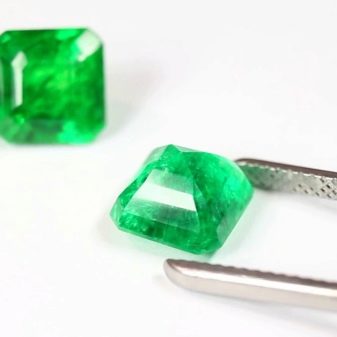

The determination of fakes is impossible without an accurate knowledge of the gemological properties of a natural product. Along with chrome diopside, falsifiers use tsavorite, fluorite, tourmaline, emerald spar (aka actinolite). Deceivers, not going to greatly complicate their lives, pass as emerald cubic zirconia or even plain colored glass. The differences will be:
minimum density;
features of the appearance;
sensations when touched.
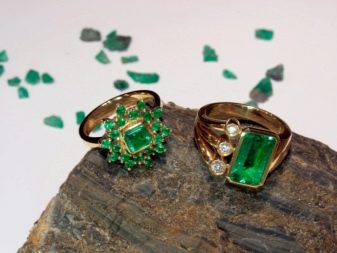
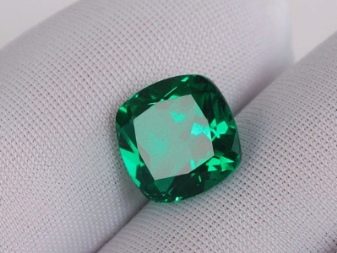
Using
Traditionally, it seems to many people that all emeralds are cut, and then transferred to jewelers. But this is not so. It is worth noting that only occasionally such a stone is used to prepare abrasives and for metal processing. A number of second-class minerals are used in industry.
The vast majority of jewelry-grade emeralds are characterized by uneven, irregular geometry. That is why jewelers prefer to cut it in a cabochon pattern. This solution allows you to make the color of the stone more saturated. An added benefit is the reduced risk of split angles.Emerald-based decorative items are valued not only by private owners; quite a few of them are collected in museums, the Diamond Fund (and its foreign counterparts).
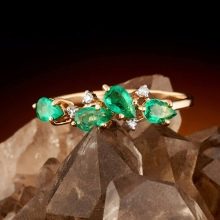
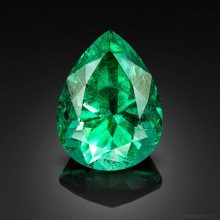

Technical emerald is needed for the production of some solid-state lasers. Artificially synthesized stones are used in such a promising industry as quantum electronics. Returning to the main (jewelry) use of emerald raw materials, it must be emphasized that ancient (cutting back to ancient Egypt) cutting techniques are still used. A more modern approach is the so-called step processing. With it, 4 corners are cut, and this allows to reduce to a minimum the shock load that can destroy the stone.


Who needs an emerald?
The significance of green stone for a person is determined in many respects by personal preferences and tastes. Both men and women can wear it in jewelry. But one must take into account the importance attached to this stone in astrology. Yes, it has already been repeatedly and fundamentally exposed, however, presenting a gift is unlikely to serve as a justification for an "enlightening speech." If a person really believes in all this, you can at least find another place and time for communication on this topic.
Astrologers note that the emerald is excellent for Gemini and Cancer. It is categorically contraindicated to scorpions. All other signs are only allowed to wear this stone, but they do not make this recommendation mandatory. Oriental horoscopes also classify emeralds as "airborne stones." They indicate that they should not be worn with:
pearls;
opals;
alexandrites;
topazes;
heliotrope.
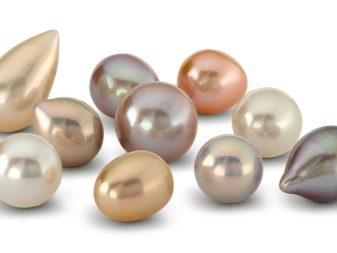
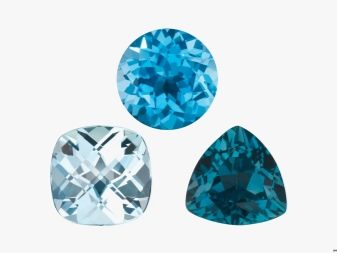
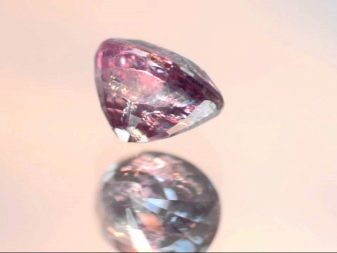

A green gemstone can go up to a white metal frame. Whether it is gold or platinum, it does not really matter. You need to give artificial stones in a silver shell, or those made by a personal order. Emerald can be used in any jewelry. But you must understand that such jewelry is worn only on especially solemn occasions.
Stylistically emerald jewelry can be complemented by sapphire or ruby.
If you have large funds, you can give an emerald surrounded by a scattering of diamonds and framed by platinum or gold. But this is the most chic decision. It is appropriate to give rings with emerald for a wedding or engagement.
Present to respectable men:
powerful silver or platinum rings;
tie clips;
cufflinks with rectangular stones.
Representatives of bohemia are increasingly wearing carelessly looking large jewelry inserted into which stones are not polished. Blackened silver may also be used in these accessories. A large crystal must be worn alone. Otherwise, its effect may be impaired. For everyday use, pendants, pendants or earrings with emeralds are recommended.

Selection and care
It is believed that the brighter and denser the tonality of a stone, the more expensive it is. Even if a bright green stone has inclusions, it will be appreciated more than an insufficiently colored transparent mineral. But not every inclusion will be approved. On the market, preference is given to atypical inclusions.
An important role can be played by the perfection of processing. But here we must take into account an important difference. When sold in jewelry stores, faceted emeralds are more expensive. But collectors give preference to those instances that are minimally modified or not faceted at all.
Another factor affecting the price will certainly be the mass of the mineral. Usually heavy samples are more expensive. Emeralds weighing up to 0.5 carats are considered small. If the mass is greater than this value, but less than 1 carat, then the stone is recognized as average in size. From 1 to 10 are large samples. And finally, a mineral of more than 10 carats will be assigned to a very large group.
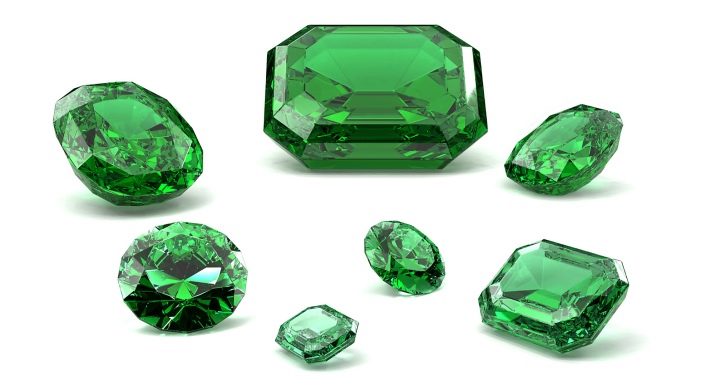
It is worth considering that connoisseurs value the most emeralds weighing 6 carats.
Bright green stones cost around 2 thousand dollars per carat. With a pale color, the price is about $ 500. And artificially produced minerals cost about 200 conventional units. When selecting, it is important to exclude the purchase of fakes. Real emeralds need to be distinguished from:
synthesized stones;
chrysoberyls;
corundum;
tourmaline;
zircons;
stained glass;
chrysolite;
Verdeita.
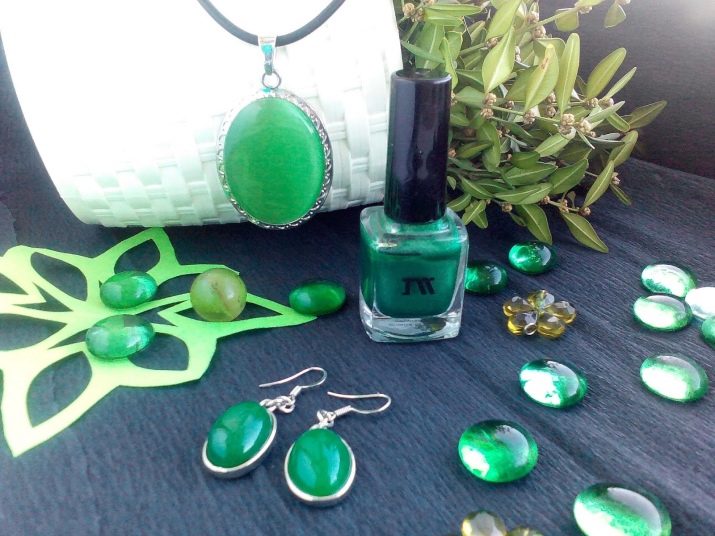
Authentic samples have a slightly muted, but invariably green color of a clear tint. “Bottle” and “swamp” tonality are unacceptable. If the mineral is lighter than normal, then it is almost certainly beryl. Synthetics have an unusual diamond shine.
It is worth looking at the brink of crystals - in nature they are clear and sharp, with good contours. If the edges are smoothed, then this is almost always a characteristic feature of the counterfeit. High-quality natural stone, if you turn it, should change the golden tone to a bluish tint or vice versa. As for the internal structure, in natural stones it is invariably uniform and does not have any deviations from homogeneity. Only very large minerals contain small cracks or minor deformations.
If the emerald is stratified, then there can be no doubt that this is a fake.
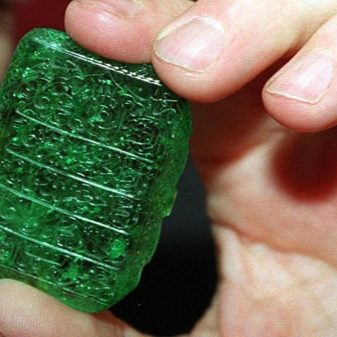
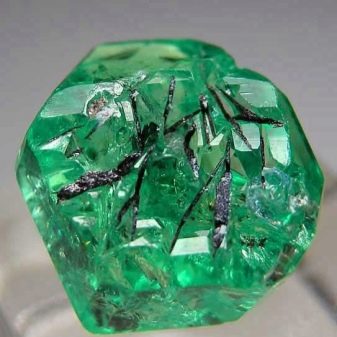
Professional jewelers and appraisers actively use the ultraviolet test. The crystals synthesized at the plant when irradiated with ultraviolet light emit a brown-orange glow. But the drawback of such a check is that some natural minerals can also glow. Color filtering according to the Chelsea scheme also benefits.
With this filtering, the following result is obtained:
pink and reddish tones - in the case of natural stone;
saturated red color - if it was made at the factory;
pure green color in case of fake.
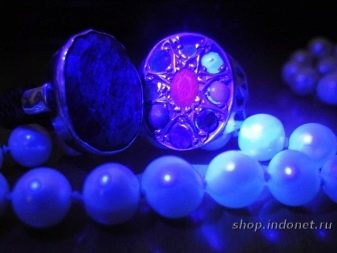
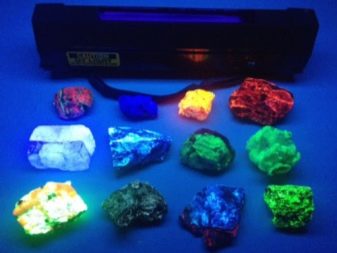
Chrysolites in yellow show yellow. If they are illuminated by electric light, a characteristic greenish tint will appear. Another test is for darkening. Genuine emeralds do not become darker if they appear in the water, or are illuminated by sunlight for a long time.
Particular attention should be paid to the selection of flawless emeralds. A very clean, smooth and defect-free surface is rarely found in the mineral world.
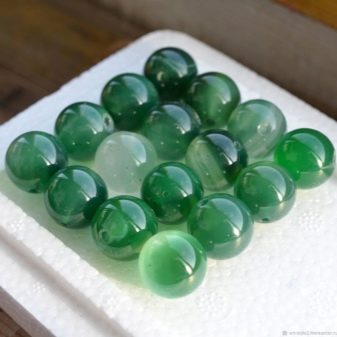
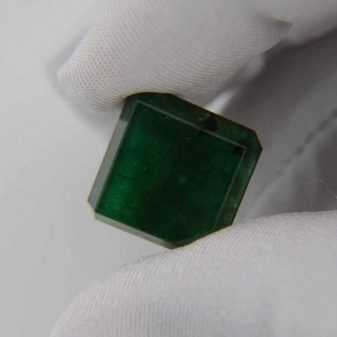
Because of this, the vast majority of samples "improve" using various reagents. Impregnation with colored resin can be detected by putting a stone in a solution of detergents or detergents. The pigment will gradually dissolve and the natural color will return. At the same time, all the deformations that suppliers are trying to hide will be revealed.
The high strength of emeralds makes it almost impossible to accidentally damage them. It is very difficult even to specially create such conditions at home when the stone was mechanically destroyed. But we must remember that this mineral has poor contact with cosmetics, household chemicals, and clean water. You need to store the emerald in a dark cool place. All jewelry, as well as individual stones, must be removed when engaged:
washing
cooking
cleaning;
minor repairs;
garden work;
other household chores.


To put on jewelry and jewelry with them is possible only after applying makeup. Many cosmetics and perfumes can damage the gem. In the house it must be stored in a box or in another closed box. If this is not possible, the stone is wrapped in soft cloth. Given the precious properties, emeralds should be kept in a strong safe: there are too many who want to appropriate them.
If the jewelry is clogged, covered with dirt, then they must be soaked in a warm solution of toilet soap. Very strong blockages are removed with a soft cloth or a small brush. It is advisable not just to buy emeralds, but also to pay for covering them with a protective layer. Any jewelers can apply it. Such a cover helps not to fear deformation.
Returning to the choice of emeralds, it should be mentioned that the origin of the mineral should be clearly described in the cabin. Those products that are grown artificially, sometimes look more beautiful than natural specimens. But they should cost less.
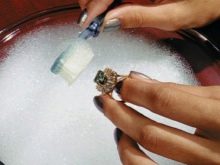


In the absence of the necessary knowledge, it is advisable to consult a gemologist or even go to the store with him. Another great benefit can bring a color table.
The most expensive and high-quality stones are mined in the vicinity of Bogota. They have a medium or dark green tone. It is worth remembering that the inhabitants of Russia have the right to buy and sell emeralds officially only after registering as entrepreneurs in the relevant specialization. At the same time, an act of gemological analysis should be provided for 100% of the stones. Optional, but highly desirable, EGL certificates.
With such documents, the total cost of the stone grows. But for the sale of emeralds on the international market (outside the borders of Russia) they are necessary. You can get similar certificates in our country. For protection against falsification, these documents are not inferior to foreign samples. Certificates come in handy when selling not only jewelry, but also rough stones.
In some cases, forgers take emerald plates and stick together with glue. In appearance, such products differ little from natural stone.
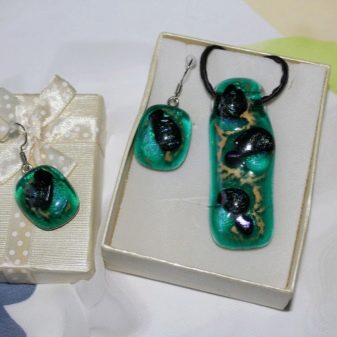
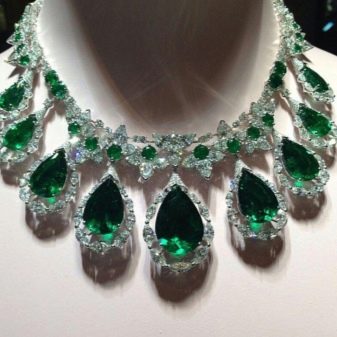
Experts recommend the maximum use of back and side light, inspect stones from all sides. At the same time, adhesive layers and bonding points are guaranteed to be detected.
Professionally grown emeralds can be distinguished from natural emeralds using a refractometer. This device is available not only to owners of gemological laboratories, but also to individuals. However, it will have to pay quite a lot of money. You cannot get the right result without special skills. Therefore, it makes sense to turn to professionals. To distinguish emeralds from glass fakes, you can pay attention to thermal conductivity; glass warms up faster than natural stone.
The best jewelry with emeralds are those where the stone was placed in a nesting frame. It eliminates all possible damage, cracks and even small scratches. Additional minerals in them can diamonds and white sapphires. They will effectively protect the stone from mechanical stress.
When washing emeralds, it is unacceptable to use too hot water. Detergent should be used in a small amount. Keep the stones in the solution for 10 minutes. After washing, they should be cleaned with a soft cloth or an old toothbrush. Washed minerals or jewelry with them are washed in warm water. Wipe dry before reuse.

Store emeralds only so that there is no contact with other precious stones. If the mineral is worn for a long time, the protective layer may be exhausted. Repeat its application will be able to jewelry workshops.
Mineral refining is performed a maximum of 3 or 4 times per year. Do not clean it with steam, ultrasound, gasoline and organic solvents. Such substances can dissolve and wash firming oils. Oil refining is done only with the help of professionals. Do it yourself with your own hands.
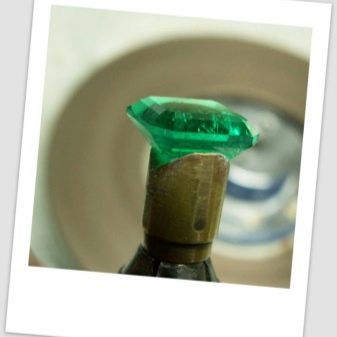

Interesting Facts
The world's largest emerald weighing 28 kg was found in Brazilian mines in 1974. If we talk about the largest faceted sample, then it weighed more than 7 kg. This instance was also found in Brazil. By the way, they processed it there. In total, in the Brazilian territory there are over 6 thousand developed deposits where emerald is mined.
And in the ancient Roman period, none other than the infamous emperor Nero used green beryl as a monocle. Through this stone, he looked at gladiatorial battles. However, this "monocle" after the death of the emperor disappeared. It is worth remembering that with all the strength, the emerald is very fragile.Even a slight blow can cause cracks.
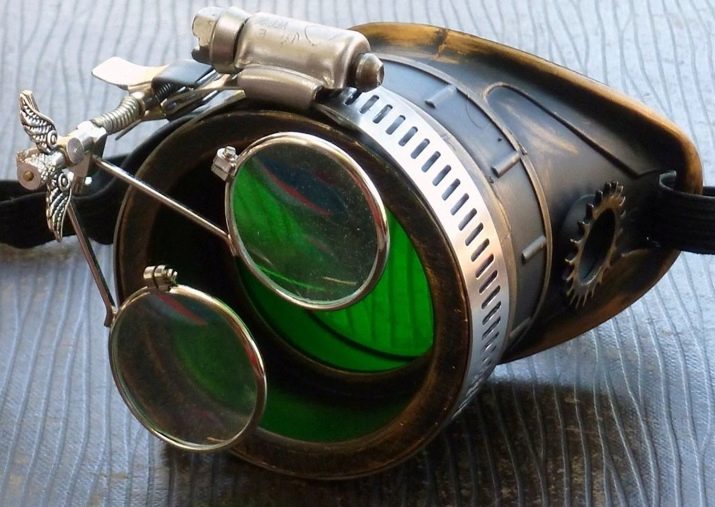
Even “explosive” emeralds are singled out in a separate group. Gradually they will fall apart into many pieces. The reason for these phenomena is significant internal stress. The very name of the stone dates back to Sanskrit and Arabic words for green. Other ancient languages use a name that resembles the radiance of a mineral.
The Austrian State Museum exhibits a bowl that was carved from an emerald of 0.1 m high in the 18th century. It was made in Italy from Colombian raw materials. Despite the documented origin of the masterpiece, there are various legends. Until the beginning of our era, emeralds were mined only in Egypt. To this day, many ancient workings on the Red Sea have been preserved.
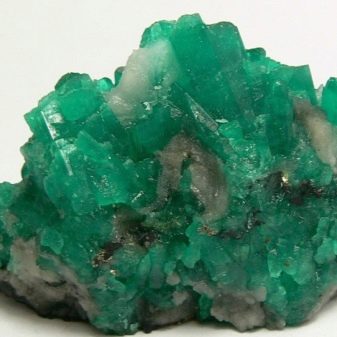
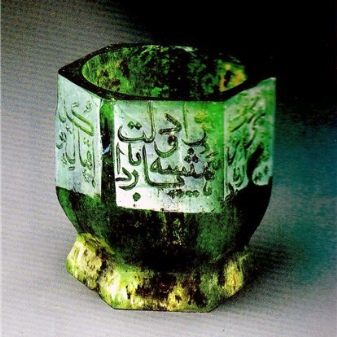
About the diagnosis of fake emeralds, see the next video.
